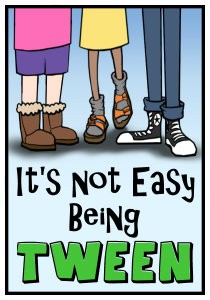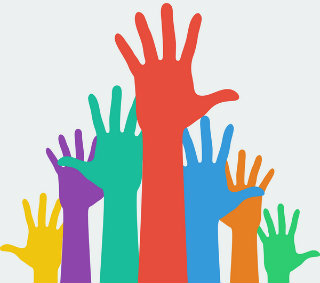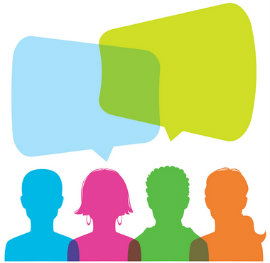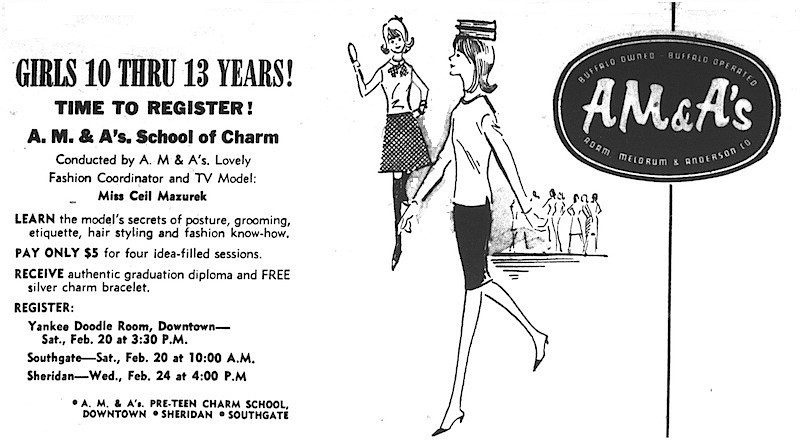A MiddleWeb Blog
 I strongly believe in being a lifelong learner as well as a reflective practitioner. One way I do this is by regularly evaluating what I am doing in my classroom, incorporating any new insights I’ve uncovered, and adjusting my teaching priorities.
I strongly believe in being a lifelong learner as well as a reflective practitioner. One way I do this is by regularly evaluating what I am doing in my classroom, incorporating any new insights I’ve uncovered, and adjusting my teaching priorities.
One concept that always remains at the forefront for me is to stay focused on what have come to be known as 21st Century Learning Skills: Creativity, Critical Thinking, Collaboration, and Communication. This is how I was taught in school in the 1970s, and I think it’s the best way to teach the way kids learn.
I believe that I do a pretty solid job of emphasizing these skills in my all-girls middle school classroom and have worked diligently to develop learner-centered instruction that addresses all of my students’ needs. However, I’m finding that I am getting frustrated at times with “holes” in their skill set.
After careful consideration, I determined that what they were lacking were some basic communication skills. Evidently, just having regular group discussions was not enough for them to learn these skills. Students need to be taught precisely how to communicate effectively.
The challenges students face
My students collaborate, discuss, and share with the class on an almost daily basis. This is generally successful, but it could be better. I notice that they have difficulty with certain behaviors. Some students raise their hand just to speak without thinking through what they are going to say in advance. The end result is that they provide a jumbled, often irrelevant, commentary.
 Other students just skip the hand raising part and blurt out whatever it is they want to say and/or interrupt one another or me. They also show poor listening skills at times and will repeat what a peer just said or ask me to repeat something I have just spent time explaining.
Other students just skip the hand raising part and blurt out whatever it is they want to say and/or interrupt one another or me. They also show poor listening skills at times and will repeat what a peer just said or ask me to repeat something I have just spent time explaining.
Even though I provide substantial opportunities for them to interact in class, they seem to have a burning need to talk and be heard, even when they don’t have anything real to say. The reason behind that is something I need to explore further.
I also notice that they have difficulties beyond classroom exercises. When we have a guest speaker or an assembly, some need multiple reminders to remain quiet and focus on the speaker. They often invade one another’s personal space or ask overly personal questions.
They don’t seem to know a polite way to approach an adult when they need assistance so they come off as rude. Some even lash out physically because they can’t make themselves understood verbally. Something has to change.
Environmental factors
I am not sure there is one underlying cause for this lack of social skills. It could be anything from a human need to fit in and be involved, to watching reality TV stars shout over the top of one another, to bringing electronics to the dinner table. Adolescence is a factor. Whatever the cause, they don’t seem to have the ability to participate in small talk or share the floor.
Because I cannot determine or change the cause, I must work on a solution that works for all. My goal is to teach my students the basics of speaking and listening.
Many others have recognized the need for explicit instruction in speaking and listening, and it is even covered in the Common Core ELA standards at every grade level. I consider these so-called “soft” skills to be every bit as essential as the literary analysis and writing skills I teach.
What’s more, these skills are far more likely to benefit them beyond my classroom more than any other thing I teach. Therefore, I am going to incorporate them in my daily instruction and expect to see my students rise to the occasion.
Back in my mother’s day, girls often attended some sort of charm school to learn how to be a “lady,” or they made a point of reading about these rules on their own.
Girls were told they should be able to have tea with the Queen, as it were, and fit into “polite society.” Matters of protocol and comportment were part of everyday school life for males and females and were usually documented on the report card under citizenship. It was considered a great compliment to be called charming.
To me, being a charming person means someone has positive and interesting things to say, knows how to listen, and has the ability to make others feel valued. This is what I want from my students – there is nothing antiquated about it.
In my own childhood and education, I learned about formal manners and etiquette from my middle school home economics teacher. While all of this is terribly old-fashioned, many of the lessons we learned are still applicable today. To me, being a charming person means someone has positive and interesting things to say, knows how to listen, and has the ability to make others feel valued. This is what I want from my students, and there is nothing antiquated about it.
My past and future practice
 http://www.middleweb.com/wp-content/uploads/2015/05/raised-hands-color.jpg 320w" sizes="(max-width: 290px) 100vw, 290px" />For 20 years, I have taught my students to give a proper handshake and to introduce themselves. This year, a colleague and I attended a professional development session in which a teacher presented how she provides an email template to her freshmen so that they know how to compose a professional, respectful email to a teacher. (Here’s a version I made.)
http://www.middleweb.com/wp-content/uploads/2015/05/raised-hands-color.jpg 320w" sizes="(max-width: 290px) 100vw, 290px" />For 20 years, I have taught my students to give a proper handshake and to introduce themselves. This year, a colleague and I attended a professional development session in which a teacher presented how she provides an email template to her freshmen so that they know how to compose a professional, respectful email to a teacher. (Here’s a version I made.)
We decided to bring that down to the 6th grade and my friend, their science teacher, did a great job showing this to our students. It is now a pleasure to receive an email from a student. These two things alone are helpful, but they are not nearly enough.
I already indirectly and informally teach many communication skills through our group interactions and activities, but I want make this instruction more explicit. I am currently developing a unit on speaking and listening that incorporates the following skills:
- how to enter and exit a conversation
- how to introduce themselves and others
- how to approach a teacher or other authority figure and ask for assistance
- how to take turns speaking and listening
- how to interpret body language
- how to use common courtesy (“please” and “thank you”)
- how to code switch between formal and informal language and behavior
- how to listen to a speaker (S.L.A.N.T.)
- how to deliver a speech
Helpful resources at hand
This is a tall order, but I am not reinventing the wheel. While there are some very expensive, ready-made curricula out there, I plan on consulting the following resources I already own or can access.
► First, I admire the work of Harvey Daniels and Nancy Steineke. They have written many professional texts addressing specific communication and collaboration skills.
 ► Second, Erik Palmer’sTeaching the Core Skills of Listening and Speaking and his PVLEGS technique are incredibly helpful. He inspires me to do this work when he says, “The good news: oral communication can be taught, students can do much better than we currently accept, and speaking-skill lessons are easy to add because our classes are already verbal. All it takes is a commitment to learn how to teach speaking and how to use the tools available today to develop competent communicators.”
► Second, Erik Palmer’sTeaching the Core Skills of Listening and Speaking and his PVLEGS technique are incredibly helpful. He inspires me to do this work when he says, “The good news: oral communication can be taught, students can do much better than we currently accept, and speaking-skill lessons are easy to add because our classes are already verbal. All it takes is a commitment to learn how to teach speaking and how to use the tools available today to develop competent communicators.”
► Third, the Contra Costa County Office of Education has compiled many lesson plans on teaching social skills to middle school students here. I will incorporate the instruction of these skills into our various class discussions. Jennifer Gonzalez wrote an article for her wonderful blog, Cult of Pedagogy, in which she listed and described numerous class discussion activities – both at the high prep and low prep levels. Finally, I will pull out my tried and true lessons from when I used to teach a speech elective.
I am probably going to be pulling out my hair as well when trying to figure out how to fit all of this into my already extremely short, 45-minute class periods, but I truly believe I will get a tremendous return on my time investment. These are more than language arts skills – they are life skills. Not only will I benefit, but so will my students’ peers and families, their future professors, bosses and coworkers, and my colleagues.
My goal is that my students will feel more confident when they know the “rules” of verbal communication. This is one curricular decision that I know I won’t regret.

You need to be a member of School Leadership 2.0 to add comments!
Join School Leadership 2.0